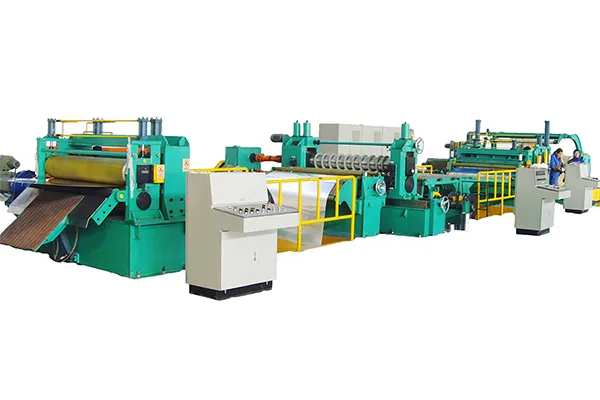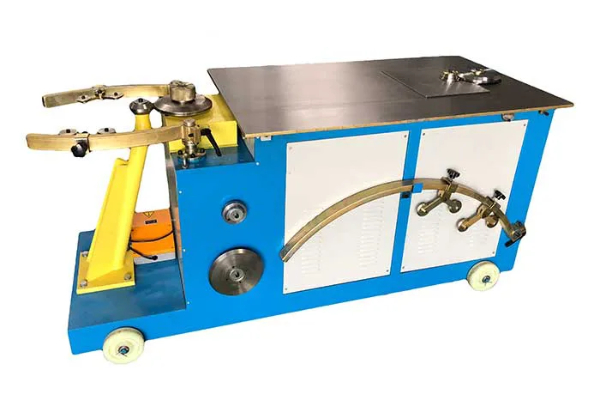
The Evolution of Round Duct Machines in the HVAC Industry
- By:Metmac
- 2024-07-23
- 156
The HVAC industry has witnessed a remarkable evolution in the design and manufacturing of round duct machines over the years. These machines play a vital role in the installation and maintenance of heating, ventilation, and air conditioning systems, ensuring efficient airflow and optimal indoor climate control.
Early Beginnings: Manual Fabrication
In the early days of the HVAC industry, round ducts were manually fabricated using sheet metal and specialized tools. This process was highly labor-intensive and required skilled craftsmen to ensure proper assembly and airtightness. Manual fabrication allowed for custom designs and modifications, but it was time-consuming and often resulted in inconsistencies.
Semi-Automated Machines: Efficiency and Consistency
The introduction of semi-automated round duct machines marked a significant advancement. These machines used pre-cut sheet metal and automated seam welding, significantly increasing production efficiency and reducing labor costs. They also improved consistency in duct assembly, ensuring a precise and secure connection between duct sections. However, semi-automated machines still required manual handling of sheet metal, which could lead to potential safety hazards and inefficiencies.
Fully Automated Fabrication: Precision and Speed
Fully automated round duct machines represent the latest innovation in the HVAC industry. These machines incorporate advanced technology, such as computer-controlled cutting and forming, automated material handling, and precision welding. Fully automated fabrication eliminates the need for manual handling and drastically increases production speed, allowing for large-scale manufacturing and rapid project completion. The high level of automation ensures consistent quality, minimizes waste, and reduces the chances of human error.
Energy Efficiency and Sustainability
Environmental concerns have played a significant role in the evolution of round duct machines. Modern machines prioritize energy efficiency and sustainability. They utilize innovative designs, such as low-energy welding processes and energy-saving drives, to reduce power consumption. Additionally, manufacturers are incorporating eco-friendly materials, such as recycled steel and non-toxic coatings, to minimize the environmental impact of their products.
Enhanced Connectivity and Monitoring
The integration of advanced connectivity and monitoring systems in round duct machines has further improved their performance and usability. Remote monitoring capabilities allow technicians to monitor machine performance, identify potential issues, and schedule maintenance remotely. This feature enhances productivity and reduces downtime, ensuring uninterrupted system operation.
Conclusion
The evolution of round duct machines in the HVAC industry has revolutionized the way heating, ventilation, and air conditioning systems are installed and maintained. From manual fabrication to fully automated manufacturing, the industry has witnessed significant advancements in efficiency, consistency, energy efficiency, and sustainability. As technology continues to advance, round duct machines will continue to play a vital role in shaping the future of HVAC systems.
-
Metal Punching Machine: Engineering Holes, Slots, and Forms with Unmatched Precision
2025/11/15 -
Sheet Metal Rolling Machine: Shaping the Curves of Modern Industry
2025/11/15 -
Metal Shear Machine: The First Cut in Precision Fabrication
2025/11/15 -
Metal Bending Brake: The Cornerstone of Precision Fabrication
2025/11/15
-
Advanced Sheet Metal Rolling, Laser Cutting, and Folding Machines for Precision Fabrication
2025/10/31 -
High-Performance Sheet Metal Bending and Cutting Machines for Modern Fabrication
2025/10/31 -
High-Quality Sheet Metal Equipment for Sale: Efficient Solutions for Modern Manufacturing
2025/10/31 -
High-Performance Sheet Metal Equipment for Sale: Forming and Shearing Solutions for Modern Fabrication
2025/10/22
-
Understanding the Role and Function of Steel Strip Slitting Machines
2024/05/11 -
Maintenance Tips for Longevity of HVAC Duct Machines
2024/05/11 -
Innovations in Steel Strip Slitting Machine Design and Technology
2024/05/11 -
Improving Accuracy in Metal Fabrication with Laser Metal Shear Machines
2024/05/11
-
A Guide to the Latest Innovations in Sheet Metal Folding Machines
2024/11/29 -
Key Features to Consider When Investing in a Sheet Metal Folding Machine
2024/11/28 -
Enhancing Precision with Advanced Sheet Metal Folding Machines
2024/11/27 -
How to Choose the Right Sheet Metal Folding Machine for Your Workshop
2024/11/26







